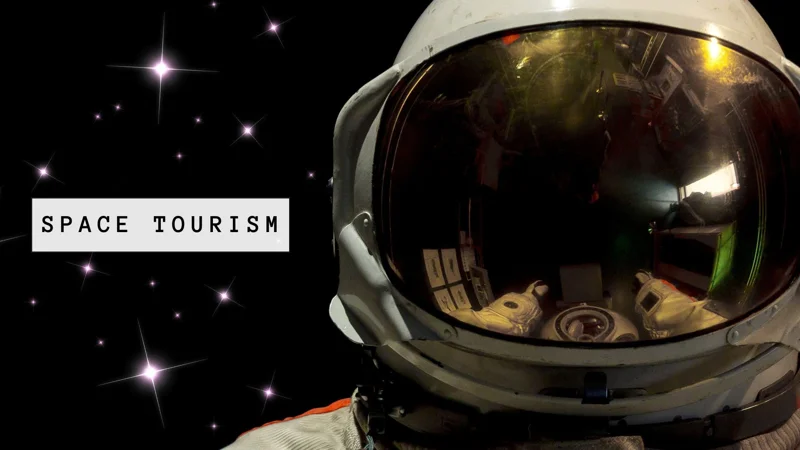The price of weightlessness: How much for a ticket to space?
Space tourism is no longer just a sci-fi dream. It is a growing industry offering everything from minutes of weightlessness on short suborbital hops to multimillion-dollar expeditions orbiting the Earth. A Kazinform News Agency correspondent takes a closer look at how much these journeys cost, what they include, and even how space is becoming a destination for memorials after death.

Space tourism today is generally divided into three formats: suborbital flights, orbital missions, and lunar travel.
The leading players in private space travel are Virgin Galactic and Blue Origin, along with companies such as Axiom Space, which organizes commercial missions to the ISS.
Suborbital flights take passengers to the edge of space, several dozen kilometers above Earth, where they experience three to five minutes of weightlessness before returning home. The entire trip lasts anywhere from ten minutes to a couple of hours, depending on the spacecraft.
For instance, one of Virgin Galactic’s commercial flights lasted about 72 minutes. In April 2025, pop star Katy Perry joined a Blue Origin suborbital mission, which featured an all-female crew and lasted around 11 minutes.
Orbital tourism offers a far more immersive experience, allowing travelers to spend days or even weeks in space, with the option of visiting the ISS.
How much does it cost and what’s included
The price of space travel varies widely depending on the type of flight.
A ticket for a suborbital trip with Virgin Galactic costs around $600,000. Blue Origin does not list a fixed public price, but most reports suggest a range between $200,000 and $300,000.
The price covers far more than just the flight itself. It typically includes medical checks, simulator training, insurance, logistics, and sometimes accommodation before and after the mission. It also offsets part of the company’s operating costs. On top of that, there can be premium charges, such as for preferred seating or extra in-cabin services.
Orbital missions, which may involve a stay on the International Space Station, are in a different league altogether. Axiom Space sets the cost of a seat at about $70 million, with roughly a year of training required beforehand. Other high-end missions, such as those using SpaceX’s Crew Dragon, are estimated at around $55 million per seat.
Lunar tourism
For now, lunar tourism remains in the realm of ambitious plans. Companies like SpaceX and Blue Origin have both announced intentions to send the first private travelers to the Moon in the coming years.
The cost of such a journey has not been disclosed, but experts suggest it could run into the hundreds of millions of dollars per passenger. A lunar trip would require months of training and involve a much longer stay in space: a loop around the Moon could last about a week, including the journey there and back.
Unlike short suborbital hops, lunar tourism would be a full-scale expedition with elevated risks. The main hurdles today are the technical reliability of spacecraft, ensuring passenger safety, and the enormous costs involved.
Vomit Comet
One of the more affordable ways to experience weightlessness without leaving Earth’s atmosphere is through NASA’s famous “Vomit Comet.” This specially modified aircraft, a parabolic flight plane, climbs steeply and then descends in sharp arcs, creating short bursts of microgravity lasting about 20–30 seconds at a time.
While it lacks the view of space or the prestige of a rocket launch, the experience gives passengers the same floating sensation astronauts feel in orbit. Prices for commercial parabolic flights offered by private operators start at around $8,000 per person. The nickname “Vomit Comet” comes from the physical effect many passengers experience during the flight.
Tourism after death - space funerals
Beyond traditional space travel, a growing niche has emerged in the form of “afterlife tourism”, sending ashes into space.
One of the companies offering this service is UK-based Aura Flights, which scatters a person’s ashes more than 30 kilometers above Earth. In the thin atmosphere and near-space darkness, the particles disperse and slowly drift back down over three to six months, eventually returning to the planet as rain or snow.
The service costs around £3,950 (just over $5,000). After booking, a launch date is scheduled, and the ashes can either be delivered in person or collected by courier. The ceremony is documented with photos and video, and families receive a memorial recording of the flight, a digital certificate, and optional keepsakes such as framed photos or additional copies of the video on USB drives. Each launch is dedicated to a single individual.
Earlier, Kazinform News Agency reported that NASA announced date of first crewed Moon mission in 50 years.
